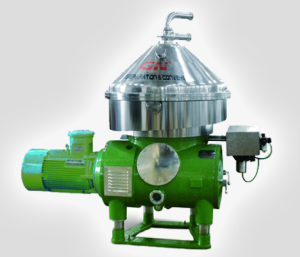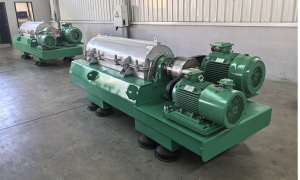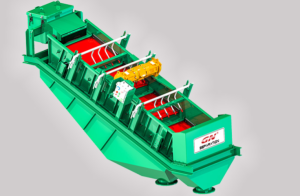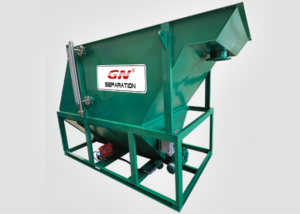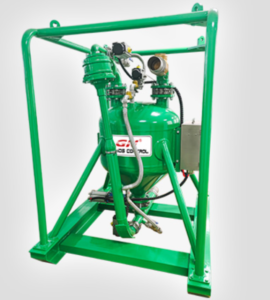At GN Separation, we understand the need for efficient, high-performance separation equipment across various industries. One of our standout products, the 2-Phase Disc Stack Separator, excels at separating fine particles from liquids, offering a powerful solution for liquid clarification in multiple applications.
What is a 2-Phase Disc Stack Separator?
The 2-Phase Disc Stack Separator is designed to remove fine particles from liquids, resulting in clarified liquid that meets stringent quality standards. Unlike decanter centrifuges, the disc stack separator operates at much higher centrifugal forces, enabling superior separation efficiency.
The G-force generated by a 2-phase disc stack separator can reach up to 12,000g, compared to a typical decanter centrifuge, which generally operates around 3,000g. This enhanced G-force results in a higher level of clarification, producing liquid with minimal solid content, ideal for industries requiring ultra-clean liquid products.
How Does the 2-Phase Disc Stack Separator Work?
The separation process begins when the material to be clarified enters the separator bowl via the feed pipe. Inside the distribution cabinet, the material accelerates to synchronize with the rotary bowl’s speed. The disc stack within the rotating bowl divides the material into multiple thin layers, maximizing the surface area for clarification.
As the high-speed centrifugal force is applied, solid particles are pushed to the outer edges of the bowl, where they are deposited in a solid slag collection cavity. Meanwhile, the clarified liquid is discharged, free from suspended solids. This self-discharging process allows for continuous operation, ensuring minimal downtime.
Applications of the 2-Phase Disc Stack Separator
The 2-phase disc stack separator is a versatile piece of equipment used across various industries, including:
- Vegetable Oil Clarification: It efficiently separates fine impurities from oil, resulting in high-quality, clear oil.
- Biopharmaceutical Industry: Used to clarify liquids in the production of vaccines, medicines, and other bio-based products.
- Dairy and Beverage Industry: Helps in clarifying milk, fruit juices, and other liquid-based beverages.
- Biofuels and Marine Oil Clarification: Provides an essential step in processing biofuels and marine oils, ensuring clean and pure end products.
In some cases, pre-treatment may be required before using the 2-phase disc stack separator, especially when the material has a high solid content or larger particles. This step can be carried out using decanter centrifuges or other separation equipment.
Technical Specifications
The 2-phase disc stack separator is available in several models, each designed to meet specific throughput and capacity requirements:
| Model | GNLD-40 | GNLD-90 | GNLD-125 | GNLD-225 |
|---|---|---|---|---|
| Bowl Diameter | 440mm | 580mm | 620mm | 800mm |
| Sliding Piston | 380mm | 500mm | 550mm | 700mm |
| Max Capacity | 1-2 m³/h | 5-10 m³/h | 10-15 m³/h | 20-25 m³/h |
| Max Speed | 7100 RPM | 6150 RPM | 6000 RPM | 4500 RPM |
| Max G Force | 12409g | 12273g | 12488g | 9063g |
| Motor Power | 11 KW | 18.5 KW | 30 KW | 45 KW |
| Feeding Pressure | 0-0.1 MPa | 0-0.1 MPa | 0-0.1 MPa | 0-0.1 MPa |
| Feeding Material | Solids content < 3% | Solids content < 3% | Solids content < 3% | Solids content < 3% |
| Starting Time | 10-15 minutes | 10-15 minutes | 10-15 minutes | 10-15 minutes |
These specifications are for reference and may vary depending on the specific requirements of your application.
Why Choose GN Separation’s 2-Phase Disc Stack Separator?
When it comes to separating fine particles from liquids and achieving high-quality clarification, the 2-phase disc stack separator from GN Separation stands out for its unparalleled G-force, operational efficiency, and broad range of applications. With its ability to handle lower solid content materials and deliver clarified liquids in industries such as oil, pharmaceuticals, dairy, and biofuels, it is a reliable solution for companies looking to enhance product purity.
